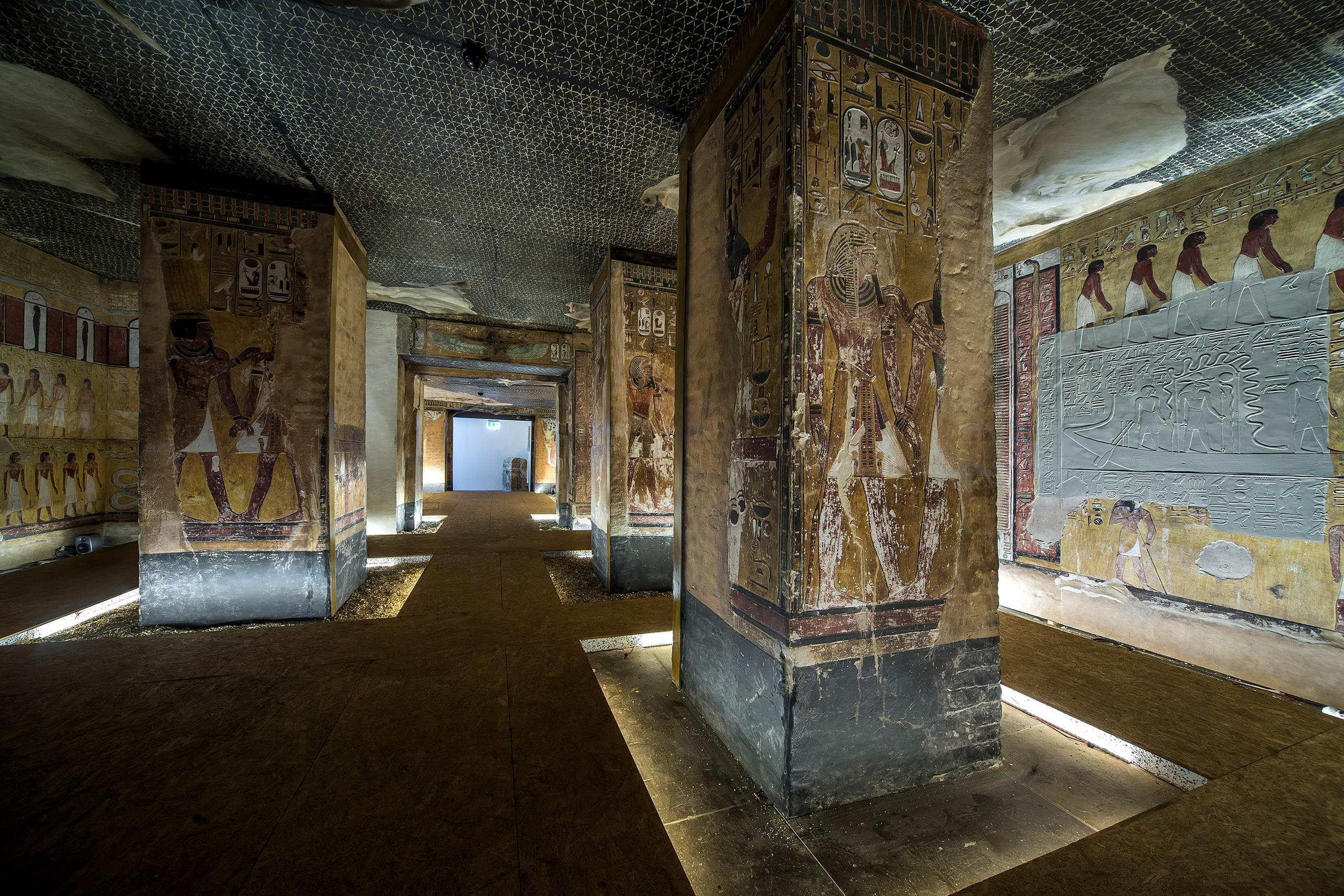
Life-sized copy of pharaoh’s tomb displayed in Basel

A 3D print of the royal tomb of King Seti I is on display at the Antikenmuseum Basel. Cutting-edge scanning and reproduction technology plus paintings documenting the tomb’s splendour have enabled a recreation in its original beauty.
The grave of Seti I (1290-1279 BC, also known as Sethos I) is the largest of its kind yet discovered. In 1817, the Italian explorer and archaeologist Giovanni Battista Belzoni praised the impeccable state of preservation when he discovered the tomb 3,000 years after the young pharaoh’s death.
Over the following 200 years the tomb’s condition suffered from improper excavations, lootings and tourism. Now, thanks to the Theban Necropolis Preservation Initiative, a project is now in place dedicated to promoting sustainable tourism and ensuring monitoring of the tombs of the Valley of the Kings in Luxor where the original tomb is situated.
The exhibition, “Scanning Seti. The Regeneration of a Pharaonic Tomb”, shows a life-sized copy of the two most splendid tombs and the sarcophagus of Seti I. It runs at the Antikenmuseum Basel und Sammlung LudwigExternal link until May 6 and is part of a five-year project to install the copy on a site close to where the original was found near Luxor.

In compliance with the JTI standards
More: SWI swissinfo.ch certified by the Journalism Trust Initiative


















![The four-metre-long painting "Sonntag der Bergbauern" [Sunday of the Mountain Farmers, 1923-24/26] had to be removed by a crane from the German Chancellery in Berlin for the exhibition in Bern.](https://www.swissinfo.ch/content/wp-content/uploads/sites/13/2025/12/01_Pressebild_KirchnerxKirchner.jpg?ver=1ea8acae)










You can find an overview of ongoing debates with our journalists here . Please join us!
If you want to start a conversation about a topic raised in this article or want to report factual errors, email us at english@swissinfo.ch.